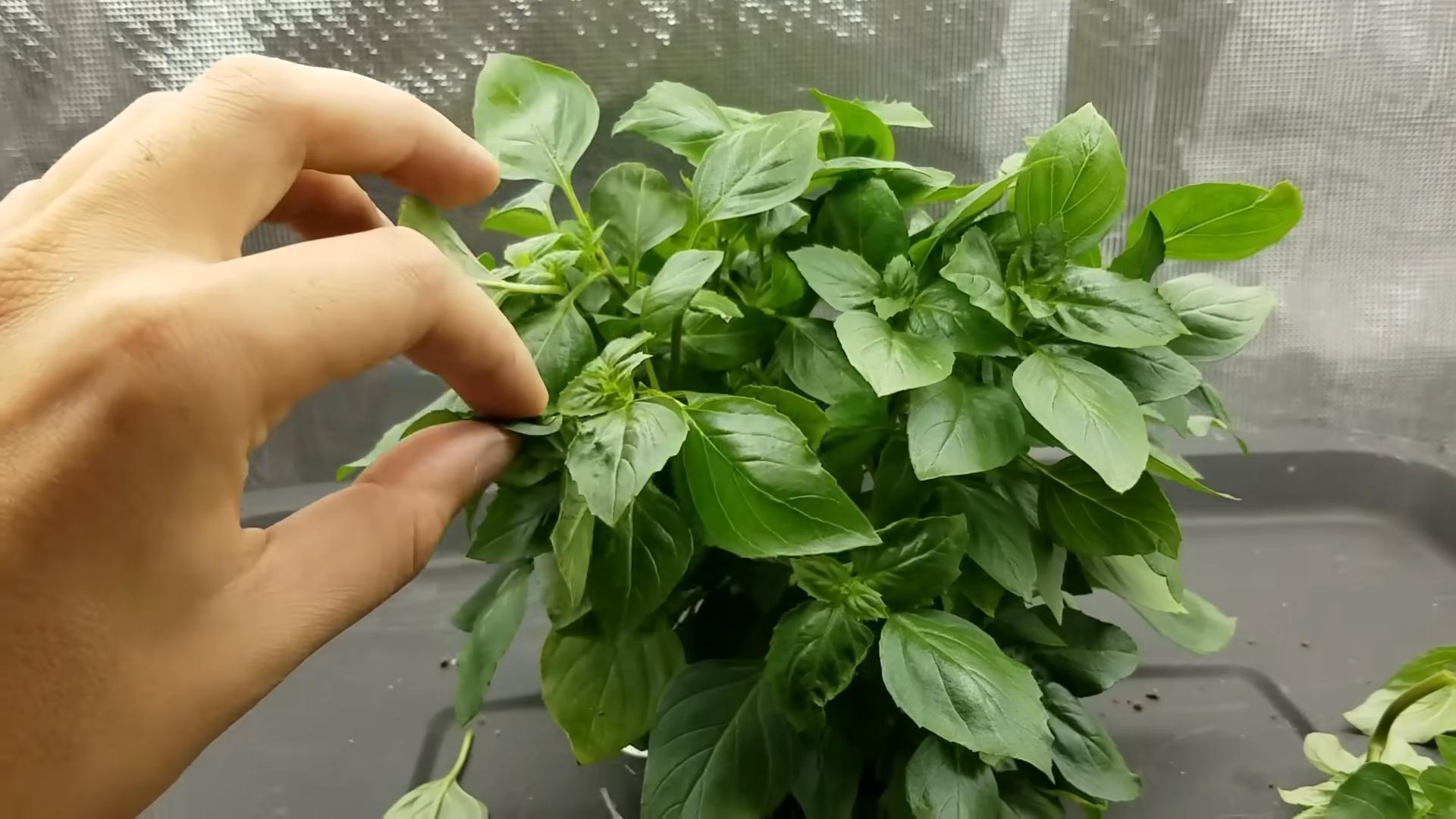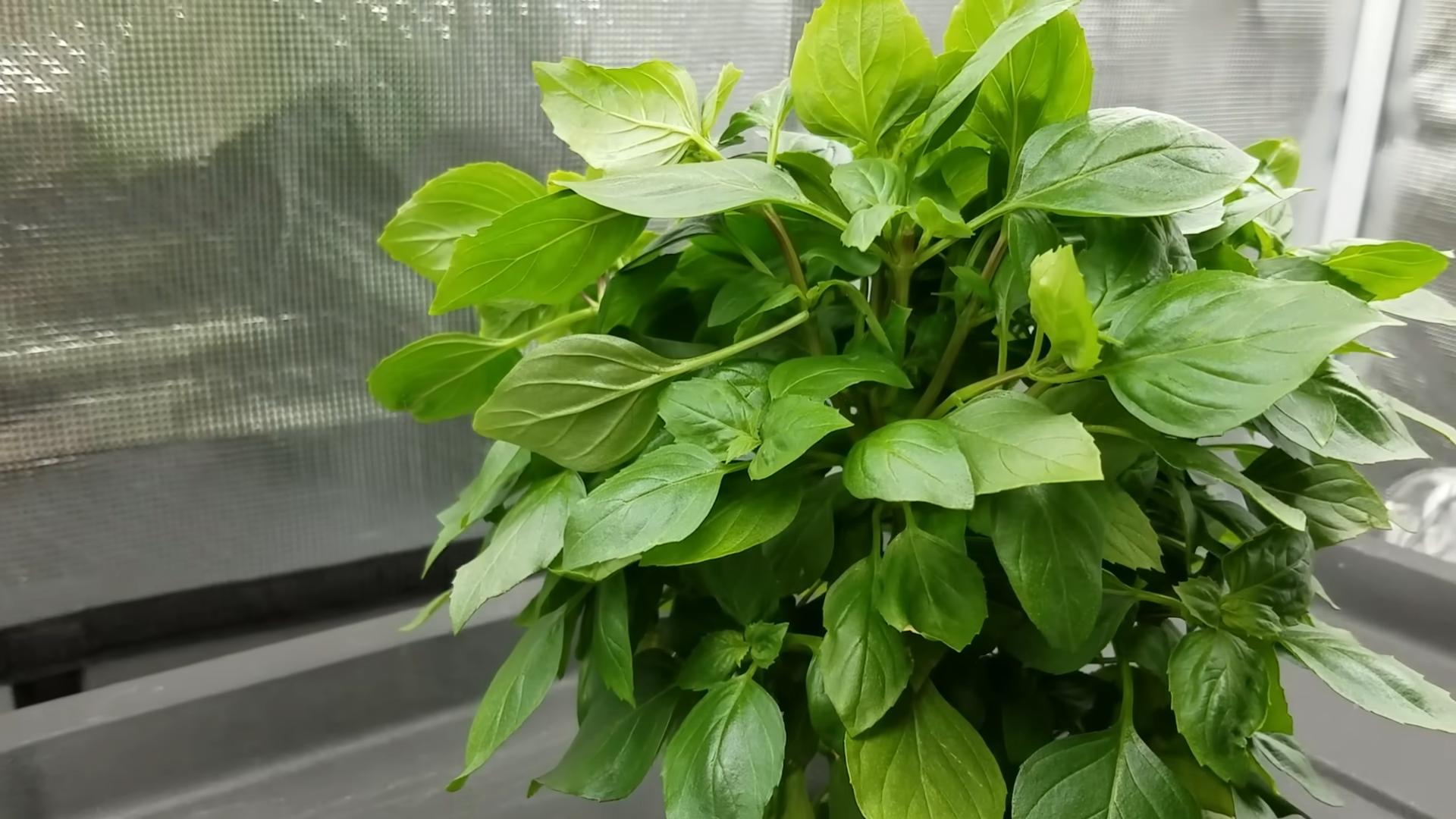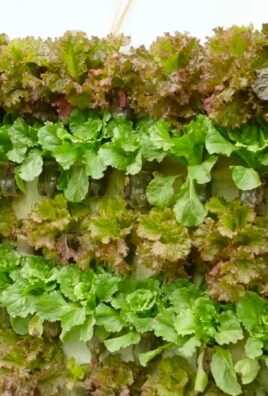Grow Basil at Home, and unlock a world of fresh, aromatic flavors right at your fingertips! Imagine stepping into your kitchen and snipping vibrant green basil leaves, ready to transform your pasta sauce, brighten your salads, or infuse your cocktails with an irresistible zest. Forget those wilted, overpriced bunches from the grocery store – with a few simple tricks, you can cultivate your own thriving basil patch, no matter the size of your living space.
Basil, revered for centuries, boasts a rich history intertwined with culinary traditions and even folklore. From ancient medicinal uses to its symbolic representation of love and good fortune in some cultures, basil has always held a special place in our hearts and kitchens. But beyond its historical significance, the real magic of growing basil at home lies in its accessibility and the sheer joy of nurturing something from seed to table.
Why should you embark on this DIY adventure? Because let’s face it, fresh basil elevates everything! Plus, knowing exactly where your food comes from and how it’s grown is incredibly rewarding. In this article, I’m going to share my favorite home gardening tricks and DIY hacks to help you grow basil at home successfully, even if you’re a complete beginner. Get ready to unleash your inner gardener and enjoy the unparalleled taste of homegrown basil!

Grow Your Own Delicious Basil: A DIY Guide
Hey there, fellow plant enthusiasts! I’m so excited to share my tried-and-true method for growing lush, fragrant basil right in your own home. Forget those sad, wilted bunches from the grocery store – with a little love and these simple steps, you’ll be snipping fresh basil for your pasta, pesto, and pizzas in no time!
Choosing Your Basil Variety
First things first, let’s talk basil types. There’s more to basil than just the standard Genovese! Here are a few popular varieties to consider:
* Genovese Basil: This is your classic Italian basil, perfect for pesto and all-around cooking. It has large, vibrant green leaves and a strong, sweet flavor.
* Sweet Basil: Very similar to Genovese, often used interchangeably.
* Thai Basil: With its slightly anise-like flavor, Thai basil is a must-have for Asian cuisine. It has purple stems and pointed leaves.
* Lemon Basil: As the name suggests, this basil has a delightful citrusy aroma and flavor. It’s great in salads, teas, and desserts.
* Purple Basil: Adds a beautiful pop of color to your garden and dishes. The flavor is similar to Genovese, but slightly milder.
I personally love growing a mix of Genovese and Thai basil – it gives me plenty of options in the kitchen!
Gathering Your Supplies
Okay, now that you’ve chosen your basil variety (or varieties!), let’s gather the necessary supplies. You’ll need:
* Basil Seeds or Seedlings: You can start from seeds or buy small basil plants from a nursery. Starting from seeds is more economical, but seedlings give you a head start.
* Potting Mix: Use a high-quality potting mix that drains well. Avoid using garden soil, as it can be too heavy and compact for container gardening.
* Pots: Choose pots that are at least 6 inches in diameter. Make sure they have drainage holes to prevent waterlogging.
* Watering Can or Spray Bottle: For gentle watering.
* Grow Lights (Optional): If you don’t have a sunny windowsill, grow lights can provide the necessary light for your basil plants.
* Fertilizer (Optional): A balanced liquid fertilizer can help your basil plants thrive.
Starting from Seeds: A Step-by-Step Guide
If you’re starting from seeds, here’s how to do it:
1. Prepare Your Pots: Fill your pots with potting mix, leaving about an inch of space at the top. Gently pat down the soil.
2. Sow the Seeds: Sprinkle the basil seeds evenly over the surface of the soil. You don’t need to bury them too deep – just lightly press them into the soil.
3. Water Gently: Use a spray bottle to mist the soil thoroughly. Be careful not to dislodge the seeds.
4. Cover the Pots: Cover the pots with plastic wrap or a clear plastic bag to create a humid environment. This will help the seeds germinate.
5. Place in a Warm Location: Place the pots in a warm, sunny location or under grow lights. The ideal temperature for germination is between 70-80°F (21-27°C).
6. Monitor Moisture Levels: Check the soil moisture daily. Keep the soil consistently moist, but not soggy. Mist with water as needed.
7. Remove Covering: Once the seeds germinate (usually within 5-10 days), remove the plastic wrap or bag.
8. Thin Seedlings: Once the seedlings have their first true leaves (the second set of leaves), thin them out so that there’s only one seedling per pot, or space them a few inches apart if you’re growing multiple plants in a larger container. Choose the strongest, healthiest-looking seedlings to keep.
Transplanting Seedlings: Giving Your Basil a Home
If you purchased seedlings from a nursery, here’s how to transplant them:
1. Prepare Your Pots: Fill your pots with potting mix, leaving about an inch of space at the top.
2. Gently Remove Seedlings: Carefully remove the seedlings from their original containers. Gently loosen the roots if they’re tightly packed.
3. Plant the Seedlings: Dig a small hole in the center of each pot and place the seedling in the hole. Make sure the top of the root ball is level with the soil surface.
4. Fill with Soil: Fill the hole with potting mix and gently pat down the soil around the seedling.
5. Water Thoroughly: Water the seedlings thoroughly after transplanting.
Caring for Your Basil Plants: The Key to Success
Now that your basil plants are settled in their new homes, it’s time to provide them with the care they need to thrive.
* Sunlight: Basil loves sunlight! Aim for at least 6-8 hours of direct sunlight per day. If you don’t have a sunny windowsill, use grow lights.
* Watering: Water your basil plants regularly, especially during hot weather. The soil should be consistently moist, but not soggy. Check the soil moisture by sticking your finger into the soil – if it feels dry, it’s time to water.
* Fertilizing: Feed your basil plants with a balanced liquid fertilizer every 2-4 weeks. Follow the instructions on the fertilizer label.
* Pruning: Pruning is essential for encouraging bushy growth and preventing your basil plants from flowering too early. Pinch off the top sets of leaves regularly, especially when you see flower buds forming. This will encourage the plant to produce more leaves.
* Pest Control: Keep an eye out for pests like aphids, spider mites, and whiteflies. If you spot any pests, treat them with insecticidal soap or neem oil.
* Temperature: Basil prefers warm temperatures between 60-80°F (15-27°C). Protect your plants from frost.
Harvesting Your Basil: Enjoying the Fruits (or Leaves!) of Your Labor
The best part of growing your own basil is, of course, harvesting it!
* When to Harvest: You can start harvesting basil leaves as soon as the plant has several sets of leaves.
* How to Harvest: Use scissors or pruning shears to snip off the leaves. Cut the stems just above a leaf node (the point where leaves grow from the stem). This will encourage new growth.
* Harvest Regularly: The more you harvest, the more your basil plant will produce! Don’t be afraid to snip off lots of leaves – you can always dry or freeze them for later use.
Troubleshooting: Common Basil Problems and Solutions
Even with the best care, you might encounter some problems along the way. Here are a few common issues and how to fix them:
* Yellowing Leaves: This could be caused by overwatering, underwatering, nutrient deficiency, or pests. Check the soil moisture and adjust your watering accordingly. Fertilize your plants if they’re lacking nutrients. Inspect the leaves for pests and treat them as needed.
* Wilting Leaves: This is usually a sign of underwatering. Water your plants thoroughly and make sure the soil is draining well.
* Leggy Growth: This means your basil plant isn’t getting enough sunlight. Move it to a sunnier location or use grow lights.
* Flowering Too Early: This can happen if the plant is stressed or if it’s not being pruned regularly. Pinch off the flower buds to encourage more leaf growth.
* Pests: Aphids, spider mites, and whiteflies are common basil pests. Treat them with insecticidal soap or neem oil.
Extending Your Basil Harvest: Keeping the Flavor Alive
Want to enjoy your homegrown basil even after the growing season is over? Here are a few ways to preserve your harvest:
* Drying: Hang bunches of basil upside down in a cool, dry place until the leaves are completely dry. You can also dry basil leaves in a dehydrator or oven.
* Freezing: Freeze basil leaves whole or chopped. You can also make basil pesto and freeze it in ice cube trays for easy portioning.
* Infusing Oil: Infuse olive oil with basil leaves for a flavorful cooking oil.
Growing your own basil is such a rewarding experience. Not only do you get to enjoy fresh, delicious basil whenever you want, but you also get the satisfaction of nurturing a plant from seed to harvest. So, grab your supplies, follow these steps, and get ready to enjoy the taste of homegrown basil! Happy gardening!

Conclusion
So, there you have it! Growing basil at home isn’t just a fun project; it’s a gateway to fresher, more flavorful meals and a more sustainable lifestyle. We’ve walked you through the simple steps, from choosing the right variety to harvesting your bountiful crop. The beauty of this DIY trick lies in its accessibility. Whether you have a sprawling garden or a sunny windowsill, you can cultivate your own fragrant basil.
Why is this a must-try? Because store-bought basil simply can’t compare to the vibrant aroma and intense flavor of homegrown. Plus, you’ll be saving money and reducing your environmental impact by avoiding those plastic-wrapped bunches from the grocery store. Imagine the satisfaction of snipping fresh basil leaves to garnish your pasta, infuse your olive oil, or create a pesto that bursts with unparalleled freshness.
But don’t stop there! Experiment with different varieties of basil. Try Genovese for classic Italian dishes, Thai basil for Asian-inspired cuisine, or lemon basil for a citrusy twist. You can also explore different growing methods. Hydroponics, for example, can be a fun and efficient way to grow basil indoors. Consider companion planting, too. Basil is known to deter pests and improve the flavor of tomatoes, making them a perfect pairing in your garden. You can also try growing basil from cuttings of store-bought basil, extending the life of your purchase and expanding your basil collection.
We’ve covered the basics, but the real magic happens when you put these tips into practice. Don’t be afraid to experiment, adapt, and find what works best for your environment and preferences. Remember to provide adequate sunlight, well-draining soil, and consistent watering. With a little care and attention, you’ll be rewarded with a continuous supply of fresh, fragrant basil.
Now, it’s your turn! We wholeheartedly encourage you to try growing basil at home. It’s a rewarding experience that will elevate your cooking and connect you with nature. Share your experiences with us! We’d love to hear about your successes, challenges, and creative uses for your homegrown basil. Post photos of your basil plants, share your favorite recipes, and let us know what you’ve learned along the way. Let’s create a community of basil enthusiasts and inspire others to embrace the joy of growing their own herbs. Happy growing!
Frequently Asked Questions (FAQ)
What is the best time of year to start growing basil?
The best time to start growing basil is in the late spring or early summer, after the last frost has passed. Basil is a warm-weather herb and thrives in temperatures between 70°F and 80°F (21°C and 27°C). If you live in a colder climate, you can start your basil seeds indoors 6-8 weeks before the last expected frost and then transplant them outdoors once the weather warms up. Starting indoors gives the seedlings a head start and protects them from the cold. You can also purchase basil seedlings from a local nursery or garden center if you prefer not to start from seed.
How much sunlight does basil need?
Basil requires at least 6-8 hours of direct sunlight per day to thrive. If you’re growing basil indoors, place it near a sunny window that receives plenty of natural light. If you don’t have enough natural light, you can supplement with a grow light. Insufficient sunlight can lead to leggy growth and reduced flavor. Rotate your basil plant regularly to ensure that all sides receive adequate sunlight.
What kind of soil is best for growing basil?
Basil prefers well-draining soil that is rich in organic matter. A good potting mix for basil should be a blend of peat moss, perlite, and vermiculite. You can also amend your garden soil with compost or well-rotted manure to improve its fertility and drainage. Avoid heavy clay soils, as they can retain too much moisture and lead to root rot. The ideal soil pH for basil is between 6.0 and 7.5.
How often should I water my basil plant?
Water your basil plant regularly, keeping the soil consistently moist but not waterlogged. Water deeply when the top inch of soil feels dry to the touch. Avoid overhead watering, as this can promote fungal diseases. Instead, water at the base of the plant. During hot, dry weather, you may need to water your basil plant more frequently. Check the soil moisture daily and adjust your watering schedule accordingly.
How do I harvest basil?
Harvest basil leaves regularly to encourage bushier growth. Pinch off the top sets of leaves, just above a leaf node (where leaves grow from the stem). This will encourage the plant to branch out and produce more leaves. Avoid harvesting more than one-third of the plant at a time. You can also harvest entire stems of basil by cutting them off at the base of the plant. Harvest basil in the morning, after the dew has dried, for the best flavor.
How do I prevent basil from flowering?
Basil plants will eventually flower, which can reduce the flavor of the leaves. To prevent flowering, pinch off any flower buds as soon as you see them. Regular harvesting of the leaves will also help to delay flowering. If your basil plant does flower, you can still use the leaves, but they may have a slightly bitter taste.
What are some common pests and diseases that affect basil?
Some common pests that affect basil include aphids, spider mites, and whiteflies. These pests can be controlled with insecticidal soap or neem oil. Common diseases that affect basil include fungal diseases such as downy mildew and fusarium wilt. To prevent these diseases, provide good air circulation, avoid overhead watering, and use a well-draining potting mix. If your basil plant develops a disease, remove the affected leaves and treat the plant with a fungicide.
Can I grow basil indoors during the winter?
Yes, you can grow basil indoors during the winter. Provide your basil plant with plenty of sunlight or a grow light, and keep the soil consistently moist. You may need to adjust your watering schedule during the winter, as the plant will not need as much water as it does during the summer. Also, make sure the plant is away from cold drafts.
How can I propagate basil?
Basil can be easily propagated from stem cuttings. Take a 4-6 inch cutting from a healthy basil plant, removing the lower leaves. Place the cutting in a glass of water, making sure that the leaves are not submerged. Change the water every few days. After a week or two, the cutting will develop roots. Once the roots are about an inch long, you can plant the cutting in a pot filled with well-draining potting mix.
What are some creative ways to use homegrown basil?
The possibilities are endless! Use fresh basil to make pesto, add it to salads, soups, and sauces, or use it as a garnish for your favorite dishes. You can also infuse olive oil with basil for a flavorful cooking oil. Dry basil leaves for later use, or freeze them for long-term storage. Experiment with different varieties of basil to create unique flavor combinations. Consider making basil vinegar or basil salt for a unique culinary twist.





Leave a Comment